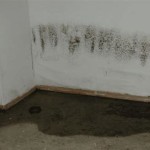How to Remove Moisture From Your Basement
A damp or wet basement is a common problem for homeowners. Excessive moisture can lead to a host of issues, including mold growth, musty odors, structural damage, and reduced indoor air quality. Understanding the sources of basement moisture and implementing effective solutions is crucial for maintaining a healthy and comfortable home environment.
Moisture in a basement can originate from various sources, both internal and external. Identifying the primary cause is the first step toward addressing the problem effectively. Common culprits include groundwater seepage, condensation, poor ventilation, leaks, and inadequate drainage.
Identifying the Source of Moisture
Accurately pinpointing the source of basement moisture is paramount for implementing the appropriate remediation strategies. A thorough inspection of the basement, both inside and out, is necessary to identify potential entry points and contributing factors. This involves a visual examination of walls, floors, windows, and the surrounding landscape.
Visual Inspection:
Begin by carefully inspecting the walls and floor of the basement for signs of water damage, such as water stains, discoloration, efflorescence (a white, powdery deposit), or mold growth. Pay close attention to areas where the walls meet the floor, as these are common entry points for groundwater. Check for cracks or gaps in the foundation walls, as these can provide pathways for moisture to penetrate the interior. Examine the windows and window wells for signs of leaks or inadequate drainage. Note any areas where the paint is peeling or bubbling, as this can indicate underlying moisture problems.Exterior Inspection:
Extend the inspection to the exterior of the home, paying close attention to the foundation, landscaping, and drainage systems. Ensure that the ground slopes away from the foundation to prevent water from pooling around the perimeter of the house. Inspect the gutters and downspouts to ensure they are functioning properly and directing water away from the foundation. Look for signs of overgrown vegetation or inadequate drainage that could contribute to water accumulation near the foundation. Check for cracks or gaps in the foundation walls on the exterior of the home.Moisture Meter Readings:
A moisture meter can be a valuable tool for determining the moisture content of walls and floors. These devices can detect elevated moisture levels that may not be visible to the naked eye. Use a moisture meter to measure the moisture content of various areas of the basement, particularly those that appear damp or stained. Record the readings and compare them to acceptable levels. This information can help to identify areas where moisture is a concern and guide subsequent remediation efforts.Humidity Assessment:
High humidity levels in the basement can contribute to moisture problems, even in the absence of visible water leaks. Use a hygrometer to measure the relative humidity in the basement. Ideally, the relative humidity should be below 60% to prevent mold growth and condensation. If the humidity is consistently high, consider using a dehumidifier to reduce moisture levels in the air.Testing for Leaks:
Conduct a water test to identify potential leaks in the walls or floor. This can be done by spraying water on the exterior of the foundation walls and observing the interior for signs of water penetration. Alternatively, you can use a garden hose to saturate the soil around the foundation and monitor the basement for leaks. This test can help to pinpoint the source of water entry and determine the extent of the problem.Effective Moisture Removal Techniques
Once the source of basement moisture has been identified, implement appropriate removal techniques to address the problem. The specific techniques required will depend on the cause and severity of the moisture issue. A combination of strategies may be necessary to achieve optimal results. Addressing the source of the moisture is critical, as simply masking the problem will not provide a long-term solution.
Improving Ventilation:
Adequate ventilation is essential for reducing humidity levels and preventing condensation in the basement. Open windows and use fans to circulate air whenever possible. Consider installing exhaust fans in areas where moisture is prevalent, such as near showers or laundry machines. Ensure that the basement has adequate ventilation to the outside to allow moist air to escape.Using a Dehumidifier:
A dehumidifier can effectively remove excess moisture from the air in the basement. Choose a dehumidifier that is appropriately sized for the square footage of the basement. Empty the water collection tank regularly or connect the dehumidifier to a drain for continuous operation. Monitor the humidity levels in the basement and adjust the dehumidifier settings accordingly to maintain optimal conditions.Sealing Cracks and Gaps:
Seal any cracks or gaps in the foundation walls and floors to prevent water from entering the basement. Use a waterproof sealant or epoxy to fill cracks and gaps. Apply the sealant according to the manufacturer's instructions, ensuring that the area is clean and dry before application. This will create a barrier against moisture intrusion and help to protect the basement from water damage.Improving Drainage:
Improve the drainage around the foundation of the home to prevent water from pooling near the walls. Ensure that the ground slopes away from the foundation to direct water away from the house. Clean gutters and downspouts regularly to remove debris and ensure they are functioning properly. Consider installing French drains or other drainage systems to collect and redirect water away from the foundation. Proper drainage is essential for preventing water from seeping into the basement.Waterproofing the Foundation:
Waterproofing the foundation can provide a long-term solution for preventing moisture intrusion. This involves applying a waterproof coating to the exterior of the foundation walls. Waterproofing can be done from the inside or the outside of the basement. Exterior waterproofing is generally more effective, as it prevents water from reaching the foundation walls in the first place. However, it can be more expensive and may require excavation. Interior waterproofing involves applying a waterproof sealant to the interior walls of the basement. While less effective than exterior waterproofing, it can still provide significant protection against moisture intrusion. Consider consulting with a professional contractor to determine the best waterproofing solution for your situation.Addressing Plumbing Leaks:
Repair any plumbing leaks promptly to prevent water from accumulating in the basement. Check for leaks around pipes, faucets, toilets, and water heaters. Fix leaks as soon as they are detected to prevent water damage and mold growth. Consider installing a water leak detection system to alert you to potential leaks before they cause significant damage.Preventative Measures to Control Future Moisture
Maintaining a dry basement requires ongoing vigilance and preventative measures. Implementing strategies to control moisture proactively can help to prevent future problems and protect the value of your home. Regularly inspect the basement for signs of moisture and address any issues promptly. Proactive maintenance can save time and money in the long run by preventing more serious problems from developing.
Regular Inspections:
Conduct regular inspections of the basement to check for signs of moisture, leaks, or mold growth. Pay close attention to areas where water has previously been a problem. Look for water stains, discoloration, efflorescence, or mold growth. Check for cracks or gaps in the foundation walls and floors. Address any issues promptly to prevent them from escalating into more serious problems.Proper Landscaping:
Maintain proper landscaping around the foundation of the home to ensure that water is directed away from the house. Ensure that the ground slopes away from the foundation to prevent water from pooling near the walls. Trim bushes and shrubs to allow for adequate air circulation around the foundation. Avoid planting trees or shrubs too close to the foundation, as their roots can damage the foundation walls.Gutter Maintenance:
Clean gutters and downspouts regularly to remove debris and ensure they are functioning properly. Clogged gutters can cause water to overflow and pool around the foundation, increasing the risk of water damage to the basement. Inspect gutters and downspouts at least twice a year, in the spring and fall, to remove leaves, twigs, and other debris. Ensure that downspouts extend far enough away from the foundation to direct water away from the house.Climate Control:
Maintain a consistent temperature and humidity level in the basement to prevent condensation and mold growth. Use a dehumidifier to reduce humidity levels, especially during humid months. Consider insulating the basement walls to reduce temperature fluctuations and prevent condensation. Proper climate control can help to create a more comfortable and healthy environment in the basement.Proper Storage Practices:
Store items in the basement off the floor and away from the walls to prevent moisture damage. Use plastic bins or shelving units to protect items from water damage. Avoid storing cardboard boxes directly on the floor, as they can absorb moisture and promote mold growth. Keep valuables and sensitive items in waterproof containers to protect them from potential water damage.By implementing these strategies, homeowners can effectively remove moisture from their basements and prevent future problems. A dry basement promotes a healthy and comfortable home environment and protects the value of the property.

Moisture In Basements Causes And Solutions Umn Extension

6 Causes Of Basement Moisture How To Fix Them

3 Ways To Prevent Humidity In A Basement Wikihow

5 Signs Your Basement Has Excess Moisture Zephyr Thomas

Get Rid Of Humidity In A Basement Without Dehumidifier

How To Dry A Wet Basement Bob Vila

Have A Hot And Humid Basement Jes Foundation Repair

Overview Dehumidification In The Basement Or Crawl Space

How To Get Rid Of Humidity In A Basement Without Dehumidifier

How To Get That Musty Smell Out Of Your Basement
Related Posts







